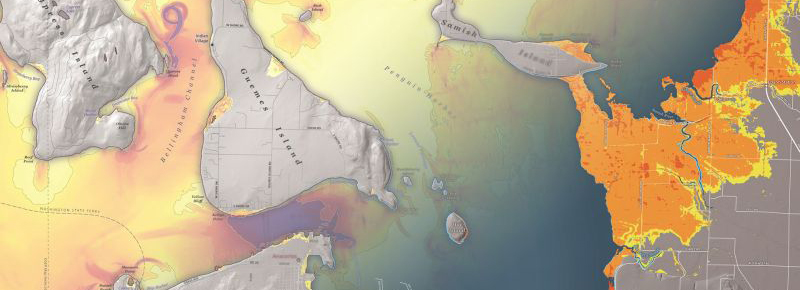The Washington State Department of Natural Resources has released a new study showing, for the first time, the impacts that a magnitude 9.0 earthquake on the Cascadia subduction zone would have on Puget Sound communities.
This study, prepared by geologists within the Washington Geological Survey division of DNR, was conducted to help develop preparation and response plans for those in the most heavily-populated areas that a Cascadia earthquake and tsunami would affect.
“Millions of people live along the Salish Sea, and knowing what to expect is critical to creating response plans so that we can be ready when – not if – an inevitable Cascadia mega-quake hits,” said Commissioner of Public Lands Hilary Franz. “It’s our duty to put the training and knowledge of our highly-trained geologists to work to make sure our communities can be prepared and safe.”
The new modeling uses a simulated magnitude 9 earthquake on the Cascadia subduction zone. The last Cascadia rupture was 321 years ago, and experts estimate a 10 to 17 percent chance that Washington experiences another in the next 50 years.
This Cascadia study builds on previous studies of impacts to Puget Sound communities from earthquakes produced on the Seattle Fault.
This new study and maps are available alongside more tsunami information online at: www.dnr.wa.gov/tsunami
The study finds the first tsunami waves would reach Whidbey Island within one hour and 30 minutes after the earthquake, and more inland locations of Puget Sound some 2 to 4 hours after. Wave activity may inundate shorelines for some 14 hours, with strong currents remaining in inland waters for more than 24 hours.
The study finds inundation ranging from a high of about 13 feet at the Vashon Island Ferry Terminal to about six inches at the Port of Olympia. Other significant sites include Seattle’s Harbor Island at 3.7 feet of inundation; the Snohomish River Delta at 5.7 feet and the Port of Tacoma at 3.5 feet.
The tsunami would first arrive as a trough, with sea levels gradually receding in all inner coastal waterway locations.
The model does not account for tide stages or local tsunamis triggered by earthquake-induced landslides. Local crustal faults may still represent a larger hazard for some communities.

